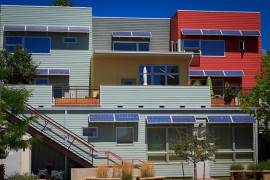
Solar PV cells are getting better by the day due to their increasing efficiency; nevertheless they are seemingly stepping ahead in terms of their composition. The latest innovation – replacing the lead layer with that of tin is environment friendly and aims to be more promising.
The existing lead based perovskite cells have been around since 2009 offering an efficiency of 15 percent. This was a remarkable feat by the crystalline structured cells, although coupled with natural hazards owing to the high presence of lead content in them.
The recent development by 2 major universities of the world – Northwestern University, USA and Oxford University, UK has replaced the lead in the cells with tin. Tin is low cost in terms of production, available in abundance and eco-friendly as compared to lead.
Lead based cells showed an efficiency level of 3.5 percent in the beginning and gradually rose to 15 percent efficiency by the present. The new cells consist of 5 layers where the top 2 are made of conducting glass and titanium dioxide. The third layer is the one which contains tin based material or methyl ammonium tin. The big disadvantage with this tin based layer is that it deteriorates when exposed to oxygen and moisture. Oxford University research team overcame this hurdle by preparing and sealing the tin layer in an air of nitrogen. The fourth layer made of tin proofing material closed the electrical circuit. The last layer was a gold cap which was the rear connecting electrode of the cell.
The latest tin based cells are showing an infant efficiency of about 6 percent which is expected to reach 20 percent in the near future. Researchers are confident that the new cells would achieve this and hope time endorses it for good!

